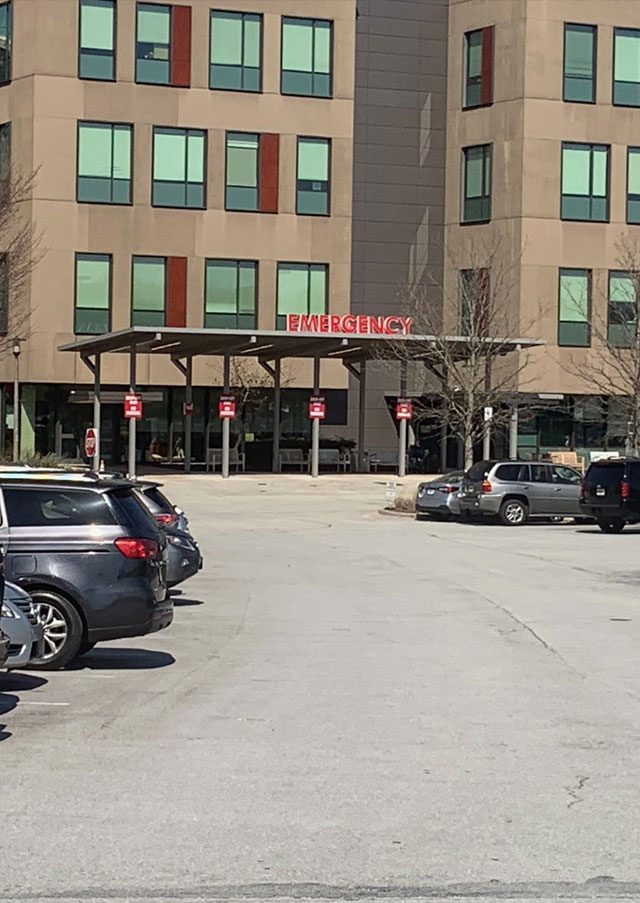Innovative Hospital Wayfinding Solutions for Better Patient Experience
In the bustling environment of hospitals, where efficiency and clarity are paramount, effective wayfinding solutions play a critical role in enhancing patient experience. Navigating through a hospital can be a daunting task for patients and visitors, but innovative wayfinding solutions can alleviate this stress, making healthcare facilities more accessible and user-friendly.

The Importance of Hospital Wayfinding
Wayfinding refers to the process of using visual and spatial cues to navigate and orient oneself in an environment. In hospitals, wayfinding systems consist of signs, symbols, and design elements strategically placed to guide individuals from one point to another. Effective hospital wayfinding is not just about signs but creating an intuitive navigation system that ensures ease of movement and reduces the cognitive load on patients and visitors.
- Call Us Today
Enhancing Patient Experience with Wayfinding
Hospitals are inherently complex structures with multiple departments, units, and services often spread across vast areas. For patients, especially those with anxiety or medical conditions, the ability to find their way quickly and easily can significantly impact their overall experience. Improved wayfinding in healthcare settings contributes to:
1. Reduced Stress and Anxiety:
Clear and consistent signage helps patients and visitors navigate unfamiliar spaces with confidence, reducing the stress associated with getting lost.
2. Increased Efficiency:
Effective wayfinding reduces the time spent searching for destinations, allowing healthcare providers to operate more efficiently and improving patient flow.
3. Enhanced Accessibility:
Accessible design elements ensure that all patients, including those with disabilities, can navigate the facility independently.
Innovative Wayfinding Solutions
Digital Navigation Systems
With the advancement of technology, digital navigation systems have become a cornerstone of modern hospital wayfinding. These systems include interactive kiosks, mobile apps, and digital directories that provide real-time directions and information. For example, a patient can input their appointment details into a kiosk at the hospital entrance and receive step-by-step directions to their destination, which can also be sent to their smartphone.
Inclusive Design
Accessibility is a key consideration in hospital wayfinding. Inclusive design ensures that wayfinding systems cater to all users, including those with visual, hearing, or mobility impairments. This can involve the use of braille and tactile signs, auditory instructions, and appropriately placed signage at wheelchair height.
Experiential Graphics
Experiential graphics integrate visual communication with the physical environment to enhance the overall experience. In hospitals, these can include wall murals, floor graphics, and thematic elements that not only guide but also comfort and engage patients. By using color coding, thematic zones, and visual landmarks, hospitals can create a more intuitive and pleasant navigation experience.
Case Study: Miller EG Design’s Hospital Projects
Miller EG Design has extensive experience in creating effective wayfinding solutions for healthcare facilities. For instance, the Emory Musculoskeletal Institute implemented a comprehensive interior and exterior signage system that included:
Lobby Area Wall Directional Flag Signs:
Clear, visible signs that direct patients from the lobby to various departments.
Conference Room and Office Signs:
Consistent and easily identifiable signs that assist staff and visitors.
Large-Scale Cut Vinyl Interior Graphics:
These not only guide but also enhance the aesthetic appeal of the environment.
Similarly, at the Emory University Hospital, Miller EG Design installed a variety of signs including:
Elevator Lobby Graphics and Signage:
These help patients easily identify floors and departments from the elevator lobby.
Donor Video Wall:
This not only serves a wayfinding function but also engages visitors and informs them about the hospital’s supporters.

Future Directions
The future of hospital wayfinding lies in the integration of smart technologies and data analytics. Smart wayfinding systems can adapt in real-time to changes within the hospital environment, such as temporary closures or high-traffic areas, providing the most efficient routes to users. Additionally, collecting data on user interactions with wayfinding systems can help hospitals continuously improve their navigation aids.
Innovative hospital wayfinding solutions are essential for improving patient experience. By employing digital navigation systems, experiential graphics, and inclusive design, healthcare facilities can create environments that are not only easier to navigate but also more welcoming and stress-free. As technology continues to evolve, the possibilities for enhancing wayfinding in hospitals are boundless, promising even better patient experiences in the future.
Learn About Hospital Wayfinding
The Role of Wayfinding Signage in Emergency Situations in Hospitals
How Effective Wayfinding Signage Design Enhances Hospital Efficiency
Case Study: Successful Hospital Wayfinding Projects by Miller EG Design
The Future of Hospital Wayfinding: Trends and Technologies to Watch
